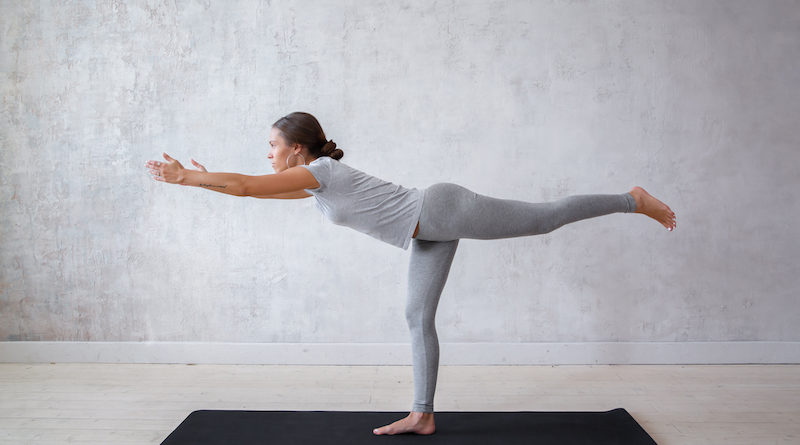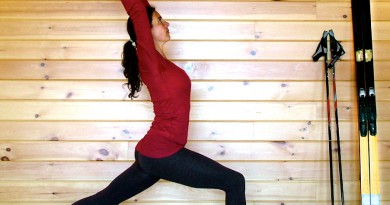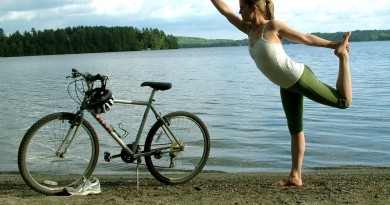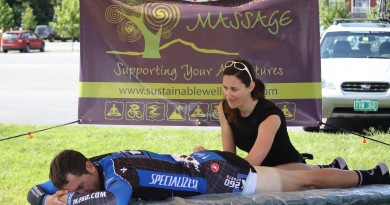A Language My Body Understands
Some athletes fall naturally into a sport. For this author, it took years of different kind of practice to find her calling.
As a kid, I didn’t have good “muscle memory.” I was told that muscle memory would help me swing the bat so it connected with the ball in a gratifying crack. It would land my hands on the balance beam, my feet on the bar, and keep my head in position while launching into back handsprings. Muscle memory would ensure that the laces of my cleats connected with the soccer ball so that it soared just past the tips of the goal keeper’s fingers every time.
I longed for that sort of grace, the athletic ease that has more to do with how your body naturally hangs together and moves through space than something learned. For some kids, dribbling a basketball looked as easy as walking. For others, lacrosse or hockey sticks became extensions of their arms. For me, the only thing my body realized it might have been meant to do was run.
Speed was my ticket to team sports, and my work ethic kept me on those teams. Games terrified me because I was smaller than the other girls, a high-school newbie to the sports I chose, and my brain scrambled under pressure. I wasn’t a natural to say the least, but I worked my tail off, muscle memory be damned.
After soccer, lacrosse, and rowing in high school, I found archery, tai chi, and weight lifting in college. But running was still the thing for me. When I ran, I could strip everything down to the essentials: a pair of shoes, my legs, my lungs, a landscape to travel across. This, I thought, would be my life sport—the one that could bring me back into my body should I get lost.
I was wrong. Joint injuries made sure of that. So I started biking when the roads were right, I skied when it snowed, and ran (off pavement, and not as far) the rest of the time. That worked well for a while.
Then, one day I walked into a yoga studio and everything changed. I didn’t know it at the time. It would take eight years to realize that that practice in that room had become a central part of my identity. It saw me through major life changes and emotional trauma and would ultimately serve as my guide through a debilitating hereditary disease.
Today, 16 years later, yoga keeps me resilient, balanced, agile, awake. It has become a critical part of my healing. It’s also a part of my aging, which feels strange to say because of the negative connotations. Other words come to mind: longevity, extension, fullness. I’m stronger now than I was two decades ago, and more confident, too. That’s a funny thing about the practice: You lose your way in time. Try to guess a yogi’s age and you’ll probably be wrong.
There is no ultimate form or truth of yoga. It’s called “practice” for a reason. You don’t win or lose at it. There is no endgame. Yoga is a path with setbacks and breakthroughs, discoveries and losses. Every single time I get on the mat, I find new openings, feel closures that were once open. There’s a push and a pull to it, an interplay between your physical and emotional consciousness. It’s like a language you speak with your body.
If you do it every day over a long period of time, you become more fluent in the language and get better at listening to what it’s trying to tell you. Yesterday, it told me I needed more sleep. Today, it revealed hidden energy stores.
For someone once very committed to tracking speed and logging miles, this is a completely new way to be active. It’s so strangely forgiving. It can be so joyful. It can be incredibly difficult, too, but not difficult in the same way hill sprints are difficult. The difficulty is spiritual. It involves accepting limits and knowing that tomorrow, those limits might be gone, you breezing right through them, only to encounter more daunting ones.
There was a time when Supta Kurmasana (tortoise) was a happy place for me. Now, due to a progressive kidney and liver disease, that posture represents panic and pain. I’ve had to learn to relax within the discomfort. Other postures that I couldn’t have dreamed of at 25 feel like a song at 42. The journey is unexpected, multifaceted, and completely ageless. Youth doesn’t equal proficiency in yoga. Experience does. And what experience so often shows you is how very hard it is to be still.
Every yogi I know has stories of suffering and elation. They go together, hand in hand, and, all told, become the story of a person’s practice, which is also the story of their body that a good teacher will learn to translate by watching and asking questions, listening and adjusting. I’ve broken down crying at the hands of my teacher because of the sheer clarity with which she was able to help me see myself in a moment, how I got to that moment, why it took me so long, that it’s okay that it took me so long. It was as though my life had become a huge connect-the-dots drawing, and she’d handed me a crayon.
In my late 20s and early 30s, I was what you might call an adrenaline yogini. I thrived on the challenge and the sweat, the impossible contortions. I muscled my way through everything. About five years into a regular practice, my teacher quietly said to me, “Now, do it with yoga.” Hadn’t I been? Hadn’t I been coming to the studio and doing the same series over and over again?
Then I knew what she meant. I had been making the shapes of the postures with my physical body—in Sanskrit, my annamaya kosha—while ignoring my pranamaya kosha (energy sheath), my manomaya kosha (mind sheath), and my vijnanamaya kosha (wisdom sheath).
As soon as I began practicing “with yoga,” the experience changed completely. I found my breath. I found my bandhas. I understood the difference between forcing something and simply arriving there. I allowed myself to be vulnerable and open and soft, which takes a lot of practice in a world that so often inspires resistance.
It reminds me of something my gymnastics coach told me as a young girl: “You’ll get hurt much worse if you stiffen when you fall.” There’s some muscle memory for you.
Hinesburg author Jill Hindle Kiedaisch’s last Endgame essay was “My Turn.”




